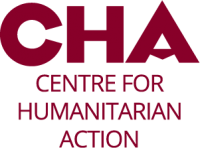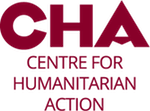| Author: | Johanna Fipp |
| Date: | 30. May 2024 |
Scroll down to find an audio version of the blog!
The list seems endless: flash floods in Afghanistan and Pakistan, heatwaves in Asia Pacific, droughts in Malawi, Zambia, and Zimbabwe. The Emergency Events Database (EM-DAT) recorded a total of 399 disasters related to natural hazards in 2023, and research estimates 14.5 million deaths and $12.5 trillion in economic losses worldwide by 2050. So far, these are only the measurable losses. Non-economic losses and damages (NELDs), which go beyond economic impact, are not even included in these significant statistics. However, they should be and they should also be part of the humanitarian discourse and interventions.
Humanitarians and NELDs
But let’s start from the beginning: what are NELDs and why should humanitarians consider them into their strategies and actions?
Losses and damages refer to the adverse effects of climate change that go beyond what people can adapt to. The Loss and Damage Fund is designed to compensate for these effects, addressing irreversible loss and damage ex-post disaster, thus serving as an essential component of climate justice. NELDs are a specific form of these losses and damages. This often overlooked category is difficult to quantify and impacts individuals, society, and the environment. NELDs include tangible losses of biodiversity, territory, and cultural assets, as well as intangible losses such as physical and mental health, identities, knowledge, and dignity.
NELDs are closely linked to ethical considerations, forcing humanitarians to reflect on how they define human life. Humanitarian aid, in its principles and actions, mainly focuses solely on saving life in a biological sense and, at least in its traditional form, does not extend beyond mere survival. Indeed, there is a lively debate about prioritisation and how humanitarian aid has, in recent years, expanded beyond this pure focus on saving lives to include areas such as resilience, preparedness, livelihoods, etc., which some welcome in times of protracted crises, while others criticise as overstepping the strict mandate of humanitarian action.
Nevertheless, it is evident that humanitarian aid does not prioritise people’s needs in terms of a sense of identity, history, connectivity, cultural heritage, and ultimately well-being. However, climate change, as the defining challenge for humanitarian aid, calls this prioritisation into question and raises the issue of whether human life needs to be viewed more holistically by humanitarian organisations.
NELDs and the temporal dimension and nature of humanitarian action
Indeed, the climate crisis is not merely a temporary emergency but rather the “new normal”. It fuels protracted crises where aid increasingly focuses not just on saving lives but on sustaining them. It is repeatedly emphasised that humanitarian efforts therefore must shift their focus much further from immediate crises to long-term resilience and adaptation strategies by investing in disaster risk reduction, climate change adaptation, anticipatory action, and overall resilience-building. As significant actors in people’s lives, especially during prolonged crises, humanitarian organisations face the challenge of not only helping people survive but also supporting them in shaping their lives beyond mere survival, with sustainability and resilience in mind. This issue, deeply related to the question of humanitarian identity and priority, encompasses also a dimension of historical responsibility beyond its forward-looking character. Non-economic losses and damages, which provide people with a sense of being and identity, are a consequence of centuries-long exploitation of countries in the global South by industrialised nations and the and the latter‘s contribution to man-made climate change. By considering and addressing NELDs in humanitarian action, including aspects of response, resilience, and adaptation, humanitarian actors can better address the lasting and cumulative impacts of climate change that are deeply rooted in historical emissions and inequities. Despite growing attention to NELDs, particularly from faith-based organisations, the loss of cultural heritage, identities linked to land, and the environment itself is not yet part of the humanitarian agenda, nor is local and indigenous knowledge.
NELDS – essential considerations for vulnerable communities
But this is precisely what matters to affected people in many low-income countries, where non-economic losses often exceed economic losses in extent and significance, as Van Schie et al. emphasise. Although this has been recognised under the UNFCCC for over a decade, few efforts have been made to address these losses. Vulnerable and marginalised groups rely heavily on non-economic aspects of their community resilience, such as knowledge systems and livelihood practices. One example of a knowledge system is the use of local medicinal knowledge to treat health issues. Some communities rely on indigenous plants and traditional healing practices for their healthcare needs. However, climate change can undermine these practices by causing habitat loss and reducing the availability of medicinal plants. As these natural resources become scarcer, community health deteriorates, leading to higher medical expenses and loss of income due to illness, thereby creating a cascade where impacts in one area often exacerbate those in another.
If non-economic losses are indeed more significant than economic ones, as the UNFCCC and research suggest, and if humanitarian responses need to evolve in response to the climate crisis and the changes it requires, then NELDs could serve as an important starting point for more intensive engagement by humanitarian actors. Given that NELDs are largely absent from current disaster management and humanitarian activities, however, the associated losses and damages to the environment, along with the resulting obligations, are neglected.
NELDs and the value dimension – beyond human suffering
The current focus on quantifiable climate impacts fails to capture the full scope of how societies experience losses and damages. Communities suffer not only from the physical destruction of, for example, rice fields and crop losses, but also, and sometimes even more painfully, from the loss of cultural practices and traditions associated with the harvest, such as festivals and rituals, which are integral to their identity. In his research on non-economic losses and damages in Bangladesh, this is emphasised by Rawnak Jahan Khan Ranon, who describes how these cultural losses “move silently through communities, breaking the soul of the people.” At issue here are values and whose perspectives determine the value of these losses.
For humanitarians, it is therefore once again crucial to adopt a locally led approach and fully incorporating local and indigenous perspectives, to ensure that humanitarian actions align with the specific needs and values of affected communities. By prioritising what communities value, humanitarian efforts can become more effective and reflective of local needs, advancing the localisation agenda where local voices are at the forefront of decision-making.
Environmental and development policies in general often prioritise market-based and quantifiable values, ignoring the critical relationship between people and their environment, including plants and animals. Pascual et al. describe this as a “values crisis,” which they identify as the foundation of biodiversity loss, climate change, pandemics, and socio-ecological injustice. By not fully recognising the environment as a valuable and protectable entity in itself, the humanitarian sector is part of this values crisis, too. Although humanitarian organisations recognise the importance of nature-based solutions through activities like reforestation and the protection of natural habitats, they are still in the early stages of addressing long-term environmental damages caused by climate change, primarily for human benefit rather than recognising the inherent value of nature itself.
Thought should be given to thinking beyond this and making it part of the humanitarian agenda to include the protection of nature in humanitarian action. After all, investing in the preservation of ecosystems and the protection of biodiversity is fundamental to ensuring the protection of human life and health. This approach is justified both on ethical grounds, recognising that humanitarianism should encompass the well-being of the entire planet and all its inhabitants, and on practical grounds, as maintaining a healthy and functional environment is essential for human survival and well-being.
While there is an argument that these responsibilities should fall to environmental agencies and programmes with greater expertise, this perspective can overlook the interconnectedness of human and environmental health. In times of crisis, the degradation of ecosystems can exacerbate human suffering, making it essential for humanitarian organisations to consider environmental factors in their work.
In many areas such as the development sector, the public health sector, and even in the German government’s security strategy, approaches that focus on both human well-being and the health of the planet are already being incorporated. Concepts like Planetary Health, Eco Health, and One Health, are examples of this integration.
Just as climate change forces humanitarians to rethink and adapt, so do non-economic losses and damages. NELDs do not easily fit into a highly quantified world with endless lists of needs, financial losses and lives lost. But whilst these figures and records are essential to provide humanitarian aid and ensure comparability, they alone are insufficient and need to be complemented with a broader perspective and a more holistic understanding of life that NELDs can provide.
Johanna Fipp is a research assistant at the Centre for Humanitarian Action (CHA).
Listen to the Blog (created with Murf AI):



Related posts
Climate-related humanitarian funding — a (mine)field of opportunities
08.04.2024Loss and damage – a humanitarian kairos moment
03.10.2023Is it right to count humanitarian aid as loss and damage?
29.08.2023